Getting Organized: Do What Works for You
If I’ve learned anything in my creative endeavors with friends, it’s that we all have a different way of doing things. Some writers plot out their stories. Some writers fly by the seat of their pants. Some people build a puzzle starting with the edge pieces, and other puzzlers start in the middle.
Finding out what works for you is the key to staying motivated with a project.
There’s not a right or wrong way to fold towels. There’s not a right or wrong way to organize an invention center. But it is important to take a little bit of time, consider your organizational style, and put your space together the way you like it.
What makes your creative spirit happy?
Do your insides sing when you see alphabetized DVD’s? Do bins in coordinating colors make you relax and want to create something new? Do quotes by your favorite inspirational leaders keep you moving forward? Let those answers direct how you move forward organizing your invention center.
I recently edited a book by the popular lifestyle blogger Sarah Symonds called Designing a Life: From House to Haven. The bit of magic she unlocks in her book changed my perspective on home décor forever. She uses a 10-step method to help individuals discover their creative style and use it to turn their home into a place of refuge. I highly recommend her book, and I’m applying her principles as I build my invention center. [Noteworthy: I don’t receive financial compensation for pitching Sarah’s book – I just found in genuinely useful and wanted to share it. Also, my center doesn’t reflect her style.]
What fuels my creative spirit?
Junk.
Even better?
Junk inside of junk.
In my invention center, I have a shoebox full of toilet paper rolls ready and waiting. Old grapefruit containers are filled with rocks. Acrylic paint is splattered on the table, and the table itself is made of uneven boards and 2×4’s that I cut in straight (warped) lines with a scroll saw.
If you’ll please notice in the featured picture, the top of the table doesn’t match or fit the bottom. And the cat photobombing my art habitually scatters the oh-so-nicely placed scissors and pliers. I’ll be the first to admit it: my center does need a chair. But it’s my happy place, and I wouldn’t change a thing.
Let your invention center be your happy place, and just do what you do. Because there’s no one in the world who can invent exactly like you.
Until next time,
Invent your story
This seems like the easy part of creating an invention center – you just get the supplies you need. The thing is, without a method to the madness, it’s just madness. So here are three plumb line questions to keep you stockpiling instead of just making piles.
Does the material fit into the goal of your invention center?
I know I haven’t brought up the term “goal” in the context of your invention center before, but if you’ve come this far, you probably have a good idea of what yours is already. (If you haven’t read the first two posts on creating an invention center, you can read what it is and Part 1 to get caught up.) If you’re woodworking, you’ll need wood, screws, a drill, etc.
This is the no-brainer stuff to have around. Without a stocked area, you’ll get bogged down looking for that lost paintbrush or copper wire. This is why we’re making an invention center.
How much do you need to get started?
Sometimes the zeal to create can take over, and you end up with a lot more than you need – especially if it’s freebie stock. Like toilet paper rolls. There are tons of art and engineering projects you can do with toilet paper rolls. But if you keep saving and don’t use them, well it can just start to get weird.
There has to be a FULL point. Then move on.
Did you throw a wrench in your plan?
If the answer to the last question is “nope” – then it’s time to find that wrench and throw it into the stockpile! Hear me out on this one. If you want to create a maker’s space, that’s great, but this is a defining moment for your invention center. You want to have something in your invention center that challenges you to break the mold. More than something. A fair lot of things. An acorn from last fall’s hike. A bunch of rusty nails. One red sock.
These are the grains of sand that help your creative oyster make a pearl.
Until next time,
Invent your story
Rejection. It’s not really the part of the writer’s life that’s fun to talk about. It’s great writing material – rejection involves conflict! Rejection is interesting! Rejection is an obstacle for the protagonist to overcome!
Rejection stinks.
Sure, it’s expected. Even the extremely successful writers are criticized and rejected by people – or their work is. And it’s a wonderful teacher (that’s for another post). I don’t expect everyone to like my work, but I do hope somebody does.
And since my last post on writing, somebody did. I mentioned WOW – Women on Writing last time because I’d submitted my work to their competition and knew I was a finalist. They liked my work – the question was, would I be a winner?
Drum roll, please….
Runner-up! My story As for Adventure was one of the top ten stories for their Spring 2018 Flash Fiction contest, and it’s so weird to be writing the words you can read my published work by clicking here. You really can. This actually happened.
Every one of us has a story and experiencing this part of mine makes me want to thank everyone in the world who helped me. Because this is something I could never do on my own. I’m thankful to God, my parents who encouraged me, my sisters who’ve always had my back, my husband who’s in my corner, my kids who genuinely care, my amazing friends who’ve walked with me in life, my teachers who gave me tools and encouragement along the way – thank you so much. Without you, I wouldn’t be doing what I do. And so many thanks to WOW with guest judge literary agent Sharon Pelletier of Dystel, Goderich & Bourret. If writers didn’t have opportunities like this one, we’d be missing the challenges that help propel us forward. Thank you!
Because this is my first “real success” as a writer, there’s a something I want to share with you that I hope make a difference for someone out there.
I joined a writing group almost two years ago. My first night there, I brought a poem with me, and I was terrified to read it. Terrified, but I knew if I was really going to do this writer thing, I needed to face that fear.
Before I could get the words out, I said:
This is stupid. This is so stupid.
Then I read it. A leader pointed out some of the poem’s strengths and where it could be improved. People liked it well enough, and I was excited to come back to group again – but in the parking lot afterward, a girl came up to me and said
Don’t ever, EVER call your work stupid.
And since that day, I never have. Because it’s not stupid. I don’t approach writing lightly, and I think most writers don’t. My writing group has weathered many rejections with me. Some of my dear friends edited the winning story for me before submission. And this month, when I walked in the door, the entire group burst into applause to celebrate my placement in WOW’s competition. They are amazing people who I love.
If you’re a writer and you’re not connected with other writers, you are missing out. My writing group helped move me from rejecting my own work, to learning how to weather rejection from others, to celebrating success.
Who you journey with makes all the difference.
Until next time,
Invent your story
If you want to follow some of my amazing writer friends who helped improve my story, check out their websites here!
In my previous post, I promised to keep you updated on my invention center. Here’s my update: progress was slow. Why? I thought a lot about how to move forward with the space I have. Maybe I’ve been overthinking it. So, without further ado, here’s…
Tip #1.
Don’t Overthink It
Underthinking things in life (Can I afford this? Should I jump?) can get you into trouble. But overthinking is its own beast. Analysis paralysis is a real thing, so if you keep coming back to a space you have to work with and thinking, “That’s probably the best place to start…” it probably is.
That said, here are four more things to consider before making that final decision:
Tip #2.
Consider the Nature of the Work
If it’s electronics, you’re going to want a table and a nearby outlet. If it’s painting, an easel may be your best option. You also will want to consider the kind of floor you’re on. I want to do a little bit of everything and not destroy anything, so I went for a corner of our basement where the floor is painted concrete and an outlet is nearby.
Tip #3.
Remember Ventilation and Safety
Everything we do involves a level of risk, so it’s smart to assess yours and take precautions. If you’re going to be working with chemicals (paint thinners, glues, stains, etc.) that give off fumes, be sure your workspace has a window you can open when needed. Having a nearby water supply is helpful. Take the time to map out an emergency plan, so you are well prepared.
Tip #4.
Lighting Effects Work
When I was a kid doing homework at the kitchen table, my mom would walk by and flip on the overhead light for me. “It’s better for your eyes,” she’d say. Mom was right. Does your space have natural or overhead lighting? Would a small lamp be beneficial for you, and if so, where will that fit into things? It’s worth considering as you move forward with your new venture.
Tip #5.
Give Yourself Room to Grow
Starting small is starting smart, but don’t limit yourself or your imagination. Right now, my invention center is a table in the corner of the basement. Maybe one day it will be a super-techy-inspiring-for-inventors-everywhere place, but today, it’s a simple table with room to grow. And that, my friends, is not a bad beginning.
Until next time,
Invent your story
What do you do when something you care for breaks? If your 18-year-old vehicle needs a new transmission, is it “broken” or does it just need another new part? Or say you find a hole in a favorite shirt. Is it trash now? A work shirt? Or still a regular shirt, just with “personality”?
I’ve never been one to enjoy throwing things away. There’s a certain sadness to it.
Like “The Giving Tree” by Shel Silverstein. There are many layers to that story, but one noteworthy angle is the tree is very useful. Even when it’s down to a stump, a stump still has value. I love that story with all my heart.
But there is a point in life where you can get stumped if you don’t embrace change.
Here’s how bad I am at this:
My popcorn popper. I’ve had this popcorn popper for over 10 years. It first cracked – just a little bit – about 2 years into its current lifespan. But it still worked. In fact, it even worked better in some ways because the crack provided a little bit of “give” for transferring popcorn to another bowl.
Over the last 8 years, the original crack grew, and it split the entire lid of the popper. There is literally 3-4 inches of lid left before it’s broken in two. But people handle popper problems in different ways:
Some people would throw it away or donate it 8 years ago.
Other people might keep it for awhile, but once it’s ¾ gone, it’s done.
I am convinced that there is someone out there who, even after it’s split in two, would duct tape this puppy together and say, “See! It still works!”
Sometimes inventions break because we break them.
Sometimes things just break down.
At some point, we have to embrace that change is a good thing. Brokenness is never fun, but sometimes inventors get so caught up in what’s broken, we lose sight of the original goal.
Does the popper make popcorn?
But don’t stop there, because after that, inventing becomes a whole lot more fun. Values and critical thinking can be applied. Is the popper operating to the best of its ability? How can we improve it? Is it aesthetically pleasing? Does it need to be? Would it be better to adopt an entirely new way to pop popcorn altogether?
When we embrace a mindset that allows for brokenness to be a catalyst for change, the world becomes a place that is full of different ways to make popcorn: over the fire, off the cob, in the microwave, on the stove in a pot, in a covered tinfoil pie plate….
I’m getting hungry, so I’m going to wrap this up. When inventions break, face the broken pieces and move forward with your end goal in mind.
The results may be the best part of your story. Happy inventing!
Welcome Inventors! Do you like travel stories? Whether it’s an airplane to Africa or a walk to Ben’s Pretzels, getting away from home base is an invention adventure. My latest real-life adventure was a surprise birthday trip to Cross Village, MI. Huge thanks to my Alex, who wanted to give me the stars.

Cross Village was less than a half-hour south of a dark-sky park. This stargazer’s dream gave us a full view of the night sky without competition of city lights. To be completely honest, we brought kids, and they were not enthused to stay out past 11:00 when it really started to get good. But the park and night were gorgeous. If this idea sparked your interest, check out: http://www.darksky.org/idsp/parks/
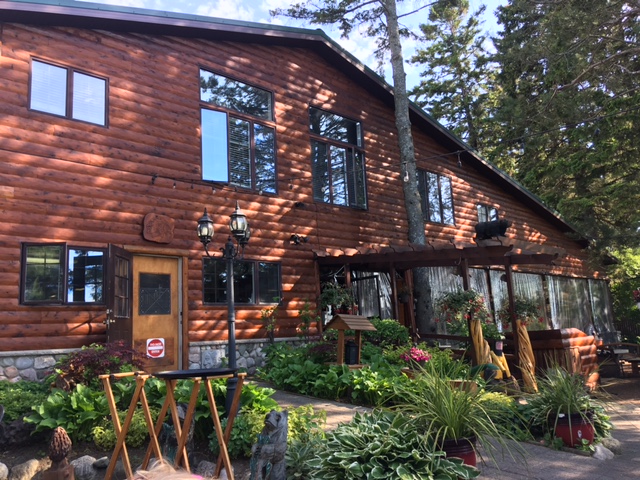 Then there was Legs Inn – a restaurant with unusual history and a gorgeous view of Lake Michigan.
Then there was Legs Inn – a restaurant with unusual history and a gorgeous view of Lake Michigan. 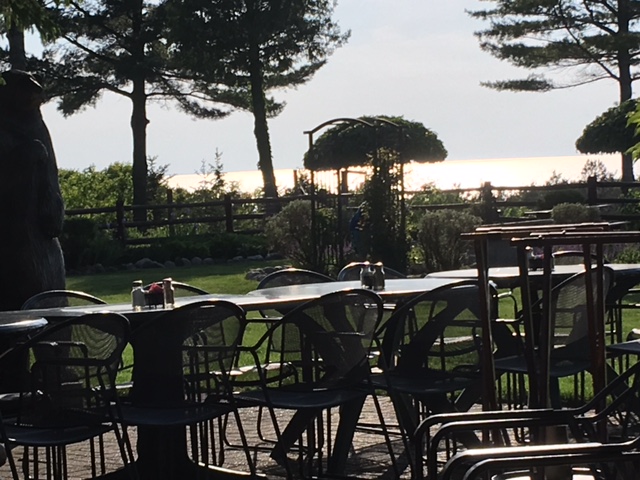
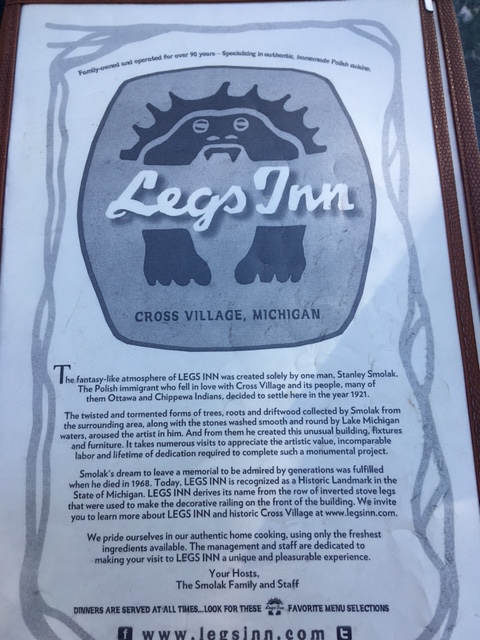
Traveling was wonderful for inspiration because it challenged me to think differently. The house soup at Legs Inn featured hard-boiled eggs! Adventure was delicious.

If you venture out, you could run into people like the artists at Three Pines Art Studio. Gene Reck and Joann Condino were not only gifted in ceramics & textiles, they were also kind. They partner with other artists internationally and host classes for all ages.
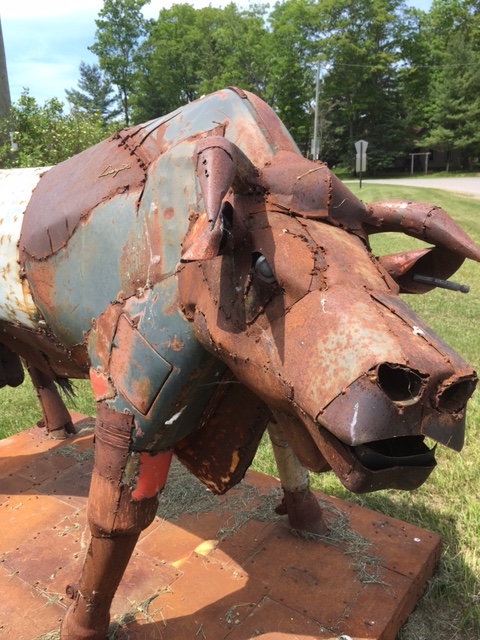
I left with this fabulous oven-safe, dishwasher-safe salmon dish that easily decorates my home as much as my table!

Also noteworthy: we did accidentally break a piece of pottery when we were there. We wanted to pay for the piece, but Gene and Joann insisted they had a better idea. They invited our kids to help them plant the (mostly intact) broken piece of pottery in a flower pot they had out front. I want to write book characters inspired by these two.
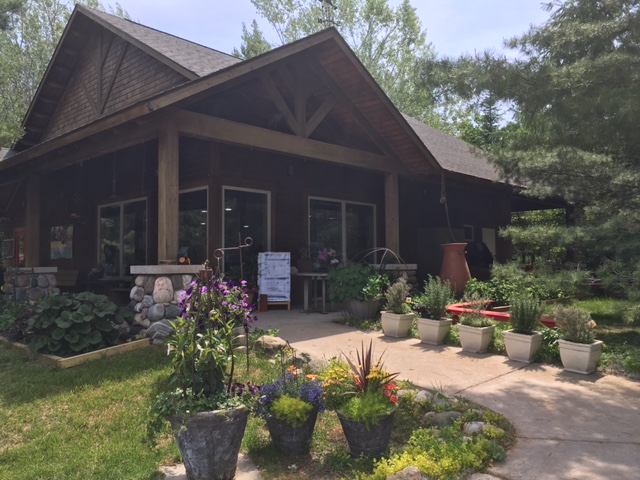
We had breakfast at the Old World Cafe, and the stonework, ornate paintings and enormous fireplace within gave us the feeling we’d been transported to another country. The food was as grandiose as the building. But tastier. 🙂
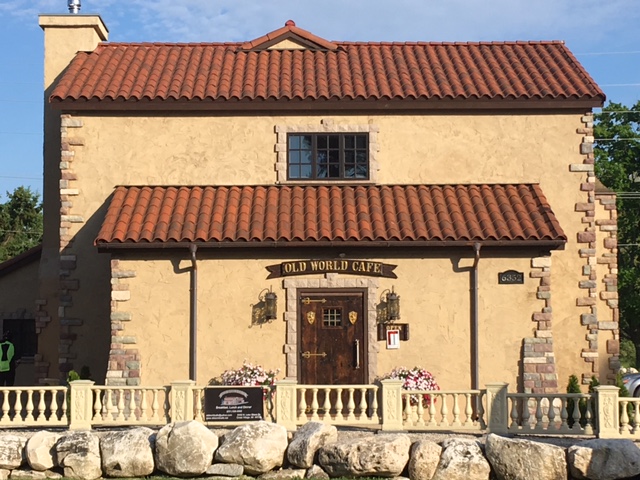
My challenge to you is to make some travel plans. Let yourself be inspired by the journey, and when things don’t go according to the plan, plant your broken pieces in a flowerpot. That may be the inspiration you were looking for all along. Now go – invent your story!
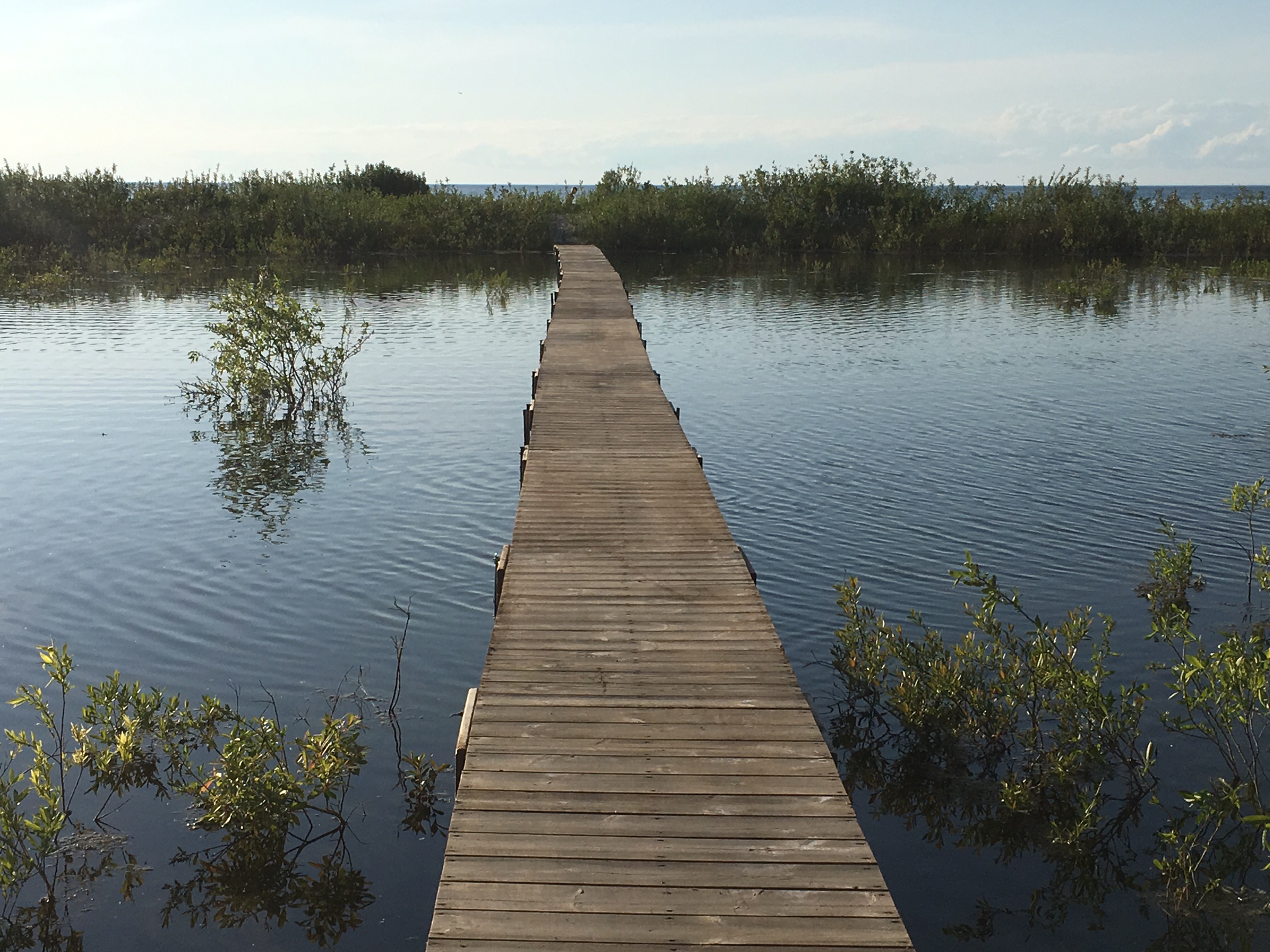
Throughout the history of mankind, every culture tells stories. Tales delight, teach, scare, and inspire audiences world-wide every day. I am captivated by stories. That is why I called my website Invent Your Story.
Whether from fiction or non-fiction, poetry or prose, strangers or friends stories are precious. Each person on this planet is valuable, and everyone has a story. Taking time to listen, learn, and grow from experiences with others is one of life’s greatest joys.
Inventing your story means many things, but I want to list a few for the curious. Here are 3 principles of story invention that I find valuable:
- Live Your Story: Each day is a story and your adventure is unfolding with every breath and choice. Take hold of your story and your ability to choose what you do with the days you are given.
- Tell Your Stories: If you’re a writer, a mechanic, a circus performer, or my Uncle Johnny you have stories to tell. You don’t have to write them, but do share them with others. You will have an impact.
- Practice Invention: Invention has two key definitions: 1) something, typically a process or device that has been invented, and 2) creative ability. You are a creation with the creative ability to solve problems, dream, appreciate, develop, and explore. Use your gifts and see what amazing things happen when you invent.
Stories enrich and shape the life of each person alive today. Invention and its powers do the same thing. Some combination of these two powerful elements is my goal each day.
If you’ve read me before, you know what’s coming next. As always, thank you. Now go. Invent YOUR story.





